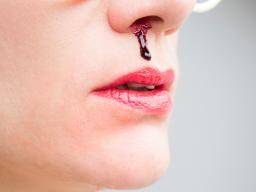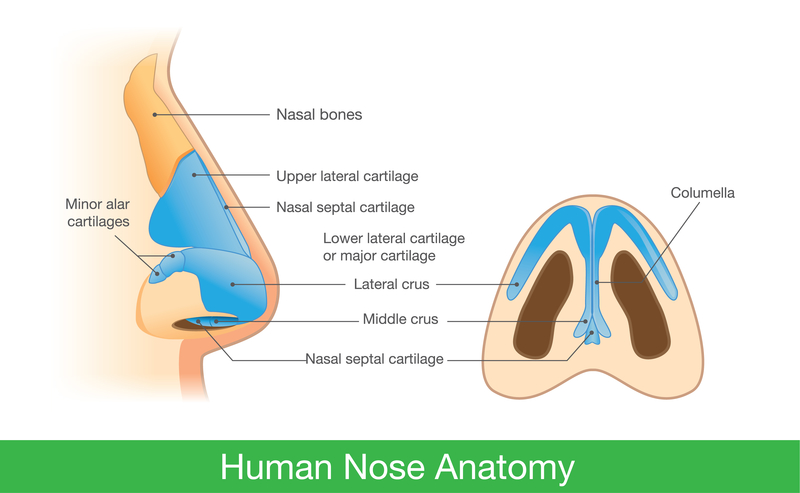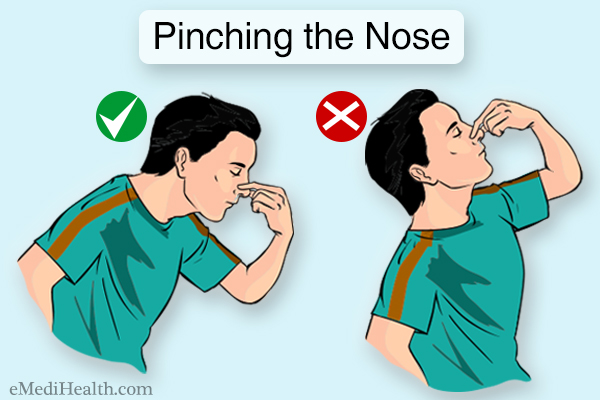Regular Nose Bleeds
Nose bleeds are most common in children between 2 and 10 years old or adults who are older than 50. The nose has many blood vessels in it to help warm and humidify the air you breathe.
 Nosebleeds Causes Treatment And Home Remedies
Nosebleeds Causes Treatment And Home Remedies
Usually a nosebleed is not serious.

Regular nose bleeds. If youve ever wiped your nose and found the tissue came away bloody then you have experienced a nose bleed. Apply a covered icepack to the bridge of your nose c old helps blood vessels to narrow which slows bleeding. Sit upright and lean forward.
I usually recommend saline mist or gel - like ChitoRhino. There are two types of nose bleeds ie. Nosebleeds may be caused by infection injury allergic reaction nose picking or an object being pushed into the nostril.
Other causes of a nosebleed may include. Self-care steps for occasional nosebleeds include. While sitting up squeeze the soft part of your.
Spray a nasal decongestant in your nose. Breathe through the mouth while leaning forward because it helps drain blood to the nose instead of the throat. The most evident and visible symptoms of nosebleeding are blood running out of the nose of your child.
You can try to treat an anterior nosebleed at home. To stop a nosebleed. Remaining upright and sitting forward will help you avoid swallowing blood which can irritate your stomach.
The bleeding that occurs from the membranes of the mucus from the nose front majorly oozes out of a single nostril. High blood pressure airway obstruction or trauma are some of the reasons for these bleeds. Another name for nosebleed is epistaxis.
It can affect both nostrils but most often occurs in only one nostril. Anterior nose bleed and posterior nose bleed. Nosebleeds often caused by harmless activities such as your child picking their nose blowing it too hard or too often or from getting knocked on the nose during play.
It could be due to allergies nose picking or dry air. If bleeding continues after 20 minutes of pressure or if there is too much bleeding continue the pressure and see your doctor or call 111 for an ambulance immediately. Gently blow your nose to clear out any clotted blood.
To stop a nosebleed start by pinching the soft cartilage of the nose. Overly sensitive blood vessels that burst and bleed in warm dry weather infections in the nose throat and sinuses eg. Sit down and firmly pinch the soft part of your nose just above your nostrils for at least 10-15 minutes lean forward and breathe through your mouth this will drain blood into your nose instead of down the back of your throat place an ice pack or bag of frozen vegetables covered by a towel on the bridge of your nose.
Posterior nosebleeds come from deep parts and may be difficult to manage. A nosebleed is blood loss from the tissue that lines your nose. A nosebleed happens when one of the blood vessels in the lining of the nose bursts.
It is those blood vessels that make the lining of your nose look redder than other parts of your body. The bleeding originates from the front part of the nose. Bleeding from the nose is.
Most nosebleeds are anterior nosebleeds which means that the bleeding occurs in the front soft part of the nose. Its caused by the rupturing of. When the mucous membrane a mucus-secreting tissue inside the nose dries crusts or cracks and is then disturbed by nose-picking it is likely to.
An anterior nosebleed is the most common with blood coming from the front of the nose. So if you have a forceful sneeze or pick your nose or otherwise insult your proboscis those surface vessels may be disrupted and you will bleed. To be proactive you can apply a saline nasal product or petroleum jelly to help moisturize the inside of the nose.
You are seeing those vessels through the very thin mucosa. After 10 minutes check if the bleeding has stopped. Intermittent nose bleeds are not worrisome - even if you have never had them before.
However if the bleeding occurs from a higher nasal cavity then you might notice the blood flow from both the nostrils. A nose bleed isnt always indicated by a gushing waterfall of blood pouring out of your nostrils. A nosebleed can be anterior or posterior.
This area of the nose contains many small blood vessels that can rupture and. If you have an anterior nosebleed you bleed from the front of your nose usually a nostril. Anterior nose bleed occurs when the blood vessels in the.
 Nosebleed Epistaxis Harvard Health
Nosebleed Epistaxis Harvard Health
 Nosebleeds Causes And Treatment Familydoctor Org
Nosebleeds Causes And Treatment Familydoctor Org
Nose Bleed Management And Epistaxis Control Iowa Head And Neck Protocols
 Is My Nose Bleed An Emergency Elite Care 24 Hour Er
Is My Nose Bleed An Emergency Elite Care 24 Hour Er
 Nosebleeds At Night Causes And Home Remedies
Nosebleeds At Night Causes And Home Remedies
/stk64048cor-56a6fcb95f9b58b7d0e5dd31.jpg) Stopping Frequent Nosebleeds In Children
Stopping Frequent Nosebleeds In Children
 Getting Too Many Nosebleeds When You Should Worry Health Essentials From Cleveland Clinic
Getting Too Many Nosebleeds When You Should Worry Health Essentials From Cleveland Clinic
 How To Stop A Nosebleed Treatment And Home Remedies
How To Stop A Nosebleed Treatment And Home Remedies
Nosebleeds Epistaxis Types Causes Treatment Prevention
 How To Stop A Nosebleed Treatment And Home Remedies
How To Stop A Nosebleed Treatment And Home Remedies
 Headache And Nosebleed Causes Photos And Treatments
Headache And Nosebleed Causes Photos And Treatments
:max_bytes(150000):strip_icc()/when-is-a-bloody-nose-a-medical-emergency-1192061-5c5dbd5d46e0fb0001849cf8.png) When A Bloody Nose Becomes An Emergency
When A Bloody Nose Becomes An Emergency
 Is Blood Clots During A Nosebleed Normal Nose Bleed Question
Is Blood Clots During A Nosebleed Normal Nose Bleed Question
Comments
Post a Comment